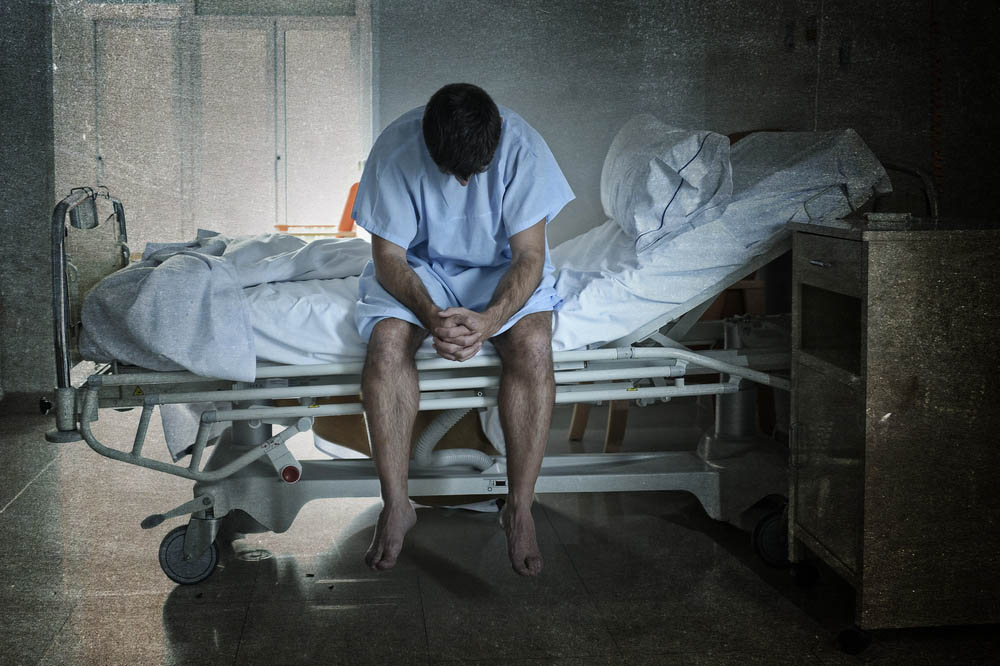States are rolling out more and more aggressive forced treatment policies, ever widening the range of people who can be targeted for involuntary hospitalization. Yet a new study shows that this system is actually increasing the very problems it is meant to alleviate: Forced hospitalization substantially increases the risk of death by suicide, death by overdose, and violent crime—nearly doubling these effects.
“This result is surprising,” the researchers write in an accompanying FAQ. “Involuntary hospitalizations are a public safety measure, and the finding that they are driving more of the outcomes they seek to prevent in the judgement call subpopulation we study has important policy implications. The significance is especially pronounced since many locations across the country are seeking to scale up involuntary hospitalizations.”
Although the layperson may think that involuntary hospitalization is rare, the researchers note that it is “a widespread practice,” with 1.2 million people forcibly hospitalized each year. That makes it more than twice as common as death from cancer, they write. And this practice is growing more common every year, with many states implementing policies to expand forced treatment.
It has been difficult for researchers to study whether involuntary hospitalization is actually helpful or not. Research consistently shows that those who get hospitalized are at greater risk of suicide and other negative outcomes after hospitalization. However, this is confounded by the fact that, supposedly, those who get hospitalized are those who are already at a much higher risk of these outcomes.
The current study aimed to get around this limitation. They used quasi-random assignment (a way of mapping real-world outcomes that simulates a randomized trial) and focused solely on the cases that were considered “judgment calls”—cases in which one clinician might hospitalize, while another might not—to remove that confounding factor. Thus, the current study is probably as close as we will ever get to having a true randomized, controlled trial to answer this question.
Of course, this also means that their study results only apply to those “judgment call” cases—but the researchers estimate that they add up to 43% of all involuntarily hospitalized patients.
Ultimately, although they can’t say that all involuntary hospitalization is detrimental, they are able to say that it is detrimental on average for nearly half of those who experience it—and thus, in “judgment call” cases, clinicians should err on the side of not forcibly imprisoning their patients.
And the policy implication is that involuntary hospitalization should be drastically reduced, not rolled out as a policy to capture more and more people.
“Does involuntary hospitalization achieve its goals?” the researchers ask. “Our results suggest that, on the margin, the system we study is not achieving the intended effects of the policy.”
The study was conducted by Natalia Emanuel at the Federal Reserve Bank of New York, Pim Welle at the Allegheny County Department of Human Services, and Valentin Bolotnyy at the Hoover Institution at Stanford University. It was published sans peer review in the Federal Reserve Bank of New York Staff Reports.
















Read that yesterday via Rob Wiponds blog.
The conclusion isn’t very surprising to those who have experienced coercive hospitalization, I guess. At least it wasn’t for me.
The methodology is incredibly smart, tho. I wasn’t aware of this method. Turns out the 2021 Nobel in econ was awarded for this.
Report comment
It’s interesting that this study was published by globalist bankers, and an organization that is “known for promoting personal and economic liberty, free enterprise, and limited government” – as opposed to in a medical journal – I will say, as a small American banker’s daughter, who has been speaking out against psychiatric fraud, criminality, and greed, for well over a decade.
Of course, “Forced Hospitalization Increases Suicide and Violent Crime” … welcome to the common sense.
Report comment
Psychiatry was never about treating people. It’s about bullying people and making them sicker so they can maintain the brainwashing of human society. You don’t even need a study to know that the methods of psychiatry are bogus and only cause harm. All you need to know is that we were told we had constitutional rights, but they developed “psychiatry” as an excuse to violate those constitutional rights! What gives them the right to grant police powers to psychiatrists to violate people’s rights? There is no excuse! We must understand that as long as they can invent excuses to violate people’s rights that we are really living in a dictatorship! In Nazi Germany, the doctors were instrumental in maintaining the regime. The same is true in America. The doctors lie to us about so many things. But the psychiatrists in particular lie about almost everything, which is why they have been deputized by the “SS” or authorities to violate and take away people’s rights!
Report comment
It’s a pity that people are turning to the mental health industry, with its long and disturbing history of abuse of patients, when Christianity had the cure for mental illness all along. I myself experienced freedom from 2 decades of depression by doing deliverance in Jesus’ name. I was also received freedom from binge issues and an odd compulsive behavior. You can find more testimonies of healing through Christ here: https://totalmentalhealth.info/cured-of-mental-illness-part-1/
Report comment